“The Wild Swans” is a lesser-known (read: non-Disneyfied) fairy tale about a young woman who sacrifices years of her life toiling in silence to rescue her brothers from a sorcerous transformation.
The heroine’s six (or seven or twelve depending on the version—Hans Christian Andersen went with eleven in his well-known rendition) brothers are cursed by their stepmother and transformed into swans. The princess (or sometimes lord’s daughter, or some other personage of noble rank) is determined to rescue her siblings from their fate, and sets out to find them. Through a series of fairy-tale-esque coincidences she encounters them again, and they tell her that to break the curse; she must weave each of them a shirt out of star-flowers (or nettles, or a certain plant that grows only in the graveyard). She cannot speak or laugh until she breaks the curse, although in the meantime she marries, has two (or three) children, deals with a wicked mother-in-law, and is nearly burned to death as a witch (ahhh fairy tales—gotta love ‘em).
Rescue comes mutually from and for her brothers, and as she breaks the enchantment on them she is able to speak for herself at last and tell the tale. One brother is left with a swan’s wing in place of an arm, because the heroine was not quite able to finish her task before the deadline. (Come on, fairy tale…can’t we give working mothers more of a break? Though, interestingly, in none of the more modern versions below does the heroine become a mother before breaking the curse. Curious…)
Buy the Book
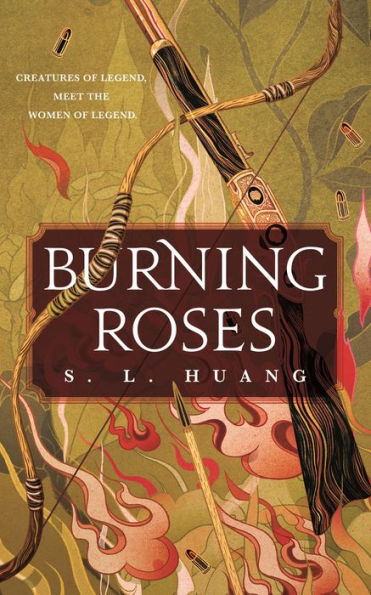

Burning Roses
It seems a powerful moment to consider this tale and the variations that it has inspired over the years. “The Wild Swans” is a lovely metaphor pointing us toward the unexpected ways one can make a difference in the world, even without having a “voice” in the traditional sense. It’s a story in which the heroine saves the day by not giving up, in which the act of sewing shirts—work that can be seen as traditionally feminine in many ways—is not only a heroic labor of love but the deed that ultimately rescues her brothers from their plight. Iterations of this story show that there are always ways of making yourself heard and effecting change in spite of obstacles, and that it’s possible to protect the people you care about through persistence and creativity.
So without further ado, here are five fascinating books and stories inspired by “The Wild Swans” which, like the original tale, should not be overlooked…
Daughter of the Forest by Juliet Marillier (2000)
“From the moment you leave this place till the moment of your brothers’ final return to humankind, no word must pass your lips, no cry, no song, no whisper must you utter…”
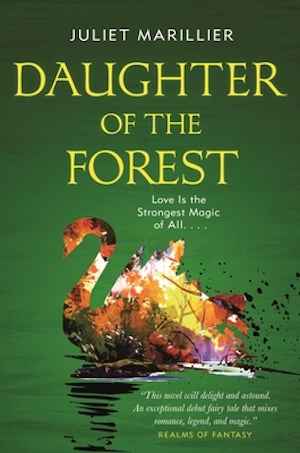
Marillier’s lush take on the tale delves deep into the implications of being voiceless, the complexities of sibling devotion, and of the politics and power plays that begin what turns into a six-book series. Sorcha is the youngest daughter of Lord Colum of Sevenwaters, and has been mostly raised by her beloved older brothers. When her father remarries and his new wife gives birth to a son, the enchantment plays out so that the new mother can rid her son of his rival half-siblings. Sorcha escapes, and although she tries to remain in isolation to work out the terms of the curse, she is first rescued from drowning, and then kidnapped by a British lord, Hugh of Harrowfield, who is convinced she knows about his missing brother. Their relationship is complex and satisfying, and without giving away the how of it, does not deviate too awfully far from the original fairy tale happily ever after.
The Sevenwaters series continues, following the saga of Sorcha’s family. Each book is its own fantastical tale, and though fairy-tale elements show up throughout the six novels, the first one is the most directly transposed from a traditional tale.
“My Swan Sister” by Katherine Vaz
(Collected in Swan Sister: Fairy Tales Retold by Ellen Datlow and Terri Windling, 2003)
“That’s part of a swan’s story, Jessica,” said my mother when she saw me worrying. “Swans disappear at night and perform bold deeds and must race back by daylight, panting.”
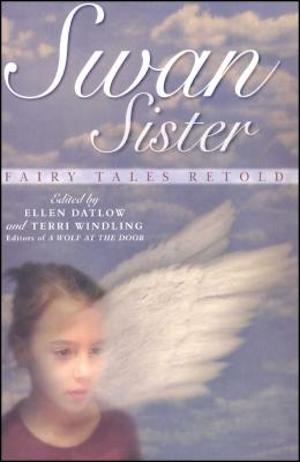
Although this collection is named for the protagonist of The Wild Swans, the rest of the stories within, apart from “My Swan Sister,” are based on an array of other fairy tales. Vaz’s “My Swan Sister” is a beautiful variation on the story, in which young Jessica’s baby sister is in the NICU. The roles are reversed here, because it’s the youngest daughter in peril, and big sister who is desperately knitting a winter sweater for her sister. Although the story has a more melancholy tone, it’s a celebration of life and the little moments that make life worth living.
“Swans” by Kelly Link
(Available from Fantasy Magazine, originally published in A Wolf at the Door and Other Retold Fairy Tales, edited by Ellen Datlow and Terry Windling, 2000)
This year I was failing choir. I opened my mouth to sing, and nothing came out. I hadn’t been able to say a word since my mother died. In my other classes, it was okay.
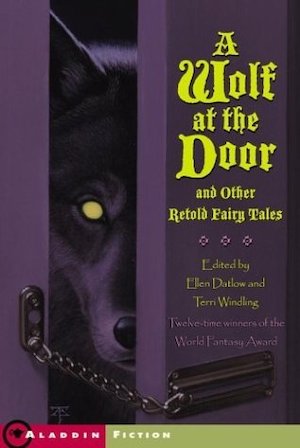
The incomparable Link weaves together a reimagining that is both classically a fairy tale and utterly modern. Emma is an eleven-year-old princess with a strange story to tell, revealed in a delightfully chaotic “How I Spent My Summer Vacation”-style narrative: she’s recently lost her mother, stopped talking, and lost all her school friends. And her stepmother turned her brothers into swans for being too noisy. While this variation doesn’t get as far through the original plot as some of the other works listed here, it does allows Emma more time to cope with her grief over the loss of her mother. It’s also more forgiving of the stepmother, who is strictly villainous in other versions. And in this retelling, Emma gets a fairy godfather, a cameo from another tale—you’ll never guess his name….
The Seventh Swan by Nicholas Stuart Gray (1962)
But at last I could speak, and I stepped between them and my brothers before any blood was spilled, and told them the truth.

Although the original story is recounted at the beginning of this book, the action here follows the youngest brother who was left with the swan wing at the end of the fairy tale. Gray actually developed the story as both a novel and a play (and I could not figure out which, if either, came first, since both are listed as having been completed in 1962). Alasdair struggles to readjust to life as a human, grieving the loss of his ability to fly, and without a sword arm to ease his transition. His sister, still worried for him, tries to find him a true love, but when he runs out on the girl in the middle of a dance, it becomes clear that things won’t resolve so easily. A tangle of enchantments and miscommunication lead the characters on a dizzying chase through the rest of the story, and the ending is both bittersweet and fitting, as a sequel to the original story should be.
The Wild Swans by Peg Kerr (1999)
Not until you say it aloud do you begin the fight, and until you start fighting, you don’t have a chance.
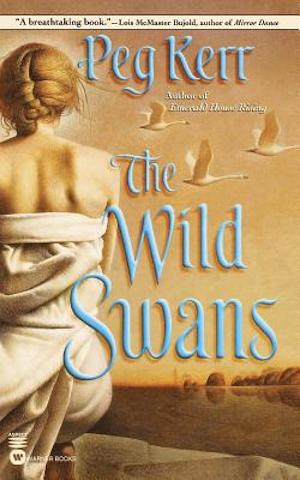
This version of the tale unfolds in two interwoven stories: an alternate history (Lady Eliza journeys to Puritan New England to work on breaking the curse) and a near-modern (1980s) tale about Elias, a young gay man who is banished from his father’s house. If you’re hesitant about the “modern” part of the book, preferring the more historical and fairy tale elements, not to worry: it reads like the best of Charles de Lint’s urban fantasies, though the magic is of a far more real and human nature. The parallels between the two stories soften hazily and then sharpen as sweetly as ripe strawberries, as both Eliza and Elias struggle to find their chosen family, rescue their loved ones, and break a curse they don’t understand. There is a powerful call to action here, to speak when you are able, and to never give up even when you cannot speak… The two stories reflect and echo one another other across time; each is compelling, but together they are breathtaking.
These are just five highlights out of many, so I hope you will offer other suggestions below. I should note that while working on this article I was not able to find any versions of this story that were written by authors of color, so if you know of any, please share in the comments!
Rachel Ayers lives in Alaska, where she writes cabaret shows, daydreams, and looks at mountains a lot. She has a degree in Library and Information Science which comes in handy at odd hours, and she shares speculative poetry and flash fiction (and cat pictures) at patreon.com/richlayers.










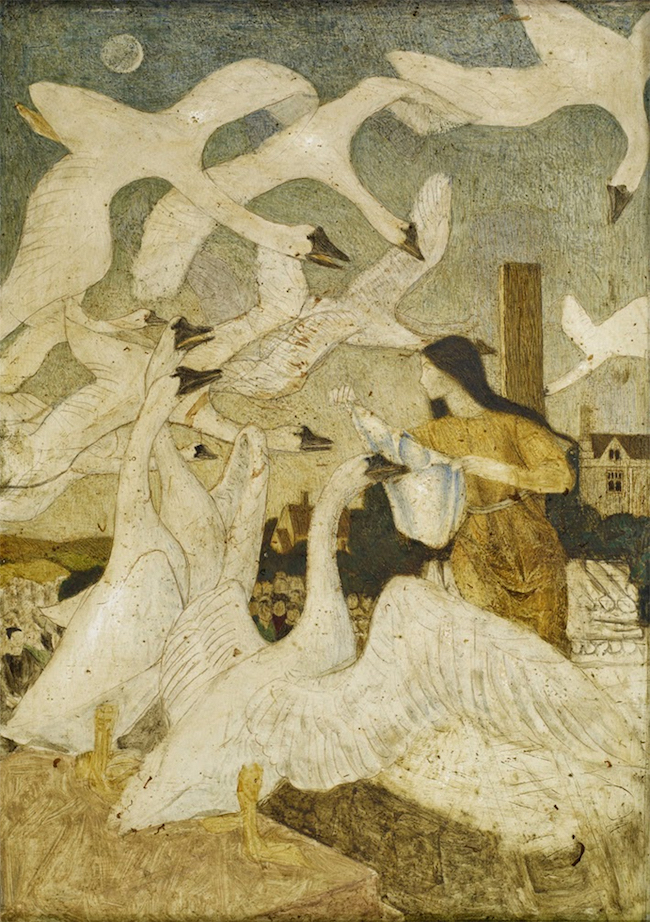
In Andersen’s version –the one I read as a child– there is not a wicked MIL, but an evil bishop. Thought the wicked MIL is indeed in the Grimm’s version and probably others.
That said, it is amazing to me that this tale managed to travel so widely with so little variation, down to the youngest brother’s leftover wing.
Aw, man. Birdwing by Rafe Martin is another good take on “The Wild Swans,” and is geared in a more disability studies perspective. How do you fight as a warrior when you have a wing for an arm? How do you see the world much more differently because of the way that your world disables you? Focused on the youngest sibling, similar to Gray’s 1962 rendition, Birdwing opens the discussion to make us think of how disabilities or impairments truly reveal how society limits, estranges, and dehumanizes those as seen in early medical texts.
I remember reading a fairy tale from an African country (I can’t remember which) where the brothers turn into parrots or macaws. It was in a book I had as a kid, I have to find it.
1987 Jim Henson series The Storyteller did a version of this, in which there were only three brothers, turned into ravens. I specifically remember one of them keeping a wing after they changed back.
I’d second the recommendation of Daughter of the Forest, but add a trigger warning for graphic portrayal of rape.
The Irish version is called ‘The Children of Lir’ . Three boys and a girl are transformed into swans thanks to the machinations of a wicked stepmother and remain that way for hundreds of years – so when they do finally change back into human form, they die shortly afterwards (Oisin suffers a similar fate on returning from the land of Tir-na-Nog). For reasons I’ve never fully understood, there’s a huge, rather ugly statue of the four in mid-transformation at the top of O’Connell Street – in a bare little park called ‘The Garden of Remembrance’. Go figure.
This fairy tale will forever be linked with the 1977 Japanese animation by Toei: https://www.imdb.com/title/tt0999910/
The aired on television when I was young and my parents had recorded it with our old VCR so was able to watch it quite a few times.
I’ve always like this rather little-known fairy tale. I wasn’t aware that there were so many retellings. Thanks for the recommendations!
My new steampunk retelling “Seven Cups of Tea” just came out in the new issue of Curiosities.
https://www.goodreads.com/book/show/54628254-curiosities-7?from_search=true&from_srp=true&qid=Lan9YZzuI2&rank=5
German children’s TV is showing a version where they are ravens, not swans:
https://www.kika.de/sonntagsmaerchen/sendung122136.html
Daniel Mallory Lavery (under Mallory Ortberg) included a version in his short story collection The Merry Spinster. If you’ve ever read the original version and thought, “seriously, though, this king dude is terrible,” then this is the retelling for you! This is one of my favorite fairy tales, and this is my favorite of the variations I’ve read.
Daughter of the Forest is one of the most endearing and romantic fantasy books I’ve ever read. Reading it in my early 20s it has heavily influenced my life since by defining what love, loyalty and sacrifice should look like.
I did not know this fairy tale going into the book and so the story was all new to me irregardless of it being a retelling. One of my absolute favourite books and one I look forward to revisiting in a couple years when I turn 40. I’ll be intrigued to find out if it’s as I remember and if I’ve held up those values I remember standing out on that first read
My earliest memory of this story was the version shown on ‘The Shirley Temple Story Hour.’ She was not in the stories, she only introduced and concluded them. I think the show was on Sunday nights before ‘The Wonderful World of Color,’ premiered. They were live action presentations. Two others stick out in my mind, ‘The Little Mermaid,’ and ‘The Prince and the Nightingale.’ They were all wonderful, and I still think of them periodically.
Thanks for the book suggestions.
Thank your this!
(This has been my favorite fairly tale for half a century, but I wasn’t aware of some of these retellings.)
I’ve always loved this fairy tale.
The one that stuck with me over many years is Swan’s Wing, by Ursula Synge. It’s the story of the prince left with a swan’s wing for an arm, and what happens after.
How can you have missed Spinning Starlight by RC Lewis? It’s a losely-based sci-fi version, sure, but wouldn’t that be right up your alley? It’s a great YA read!
Juliet Marillier’s Daughter of the Forest and its sequels are just beautiful books to read. I go back to them again and again. Her other books as well.
I wrote a version of this myself earlier this year. I wove in a bit of the Biblical tale of Joseph and some queerness.
You can read it on Medium if you’re interested: hhttps://medium.com/prismnpen/sister-of-swans-3473e1af6452?source=friends_link&sk=5244c3a8bc8b7178ffebcc696d327037
@acts of tekkla I originally read that version years ago when it was published on the Toast, and it has stuck with me ever since.